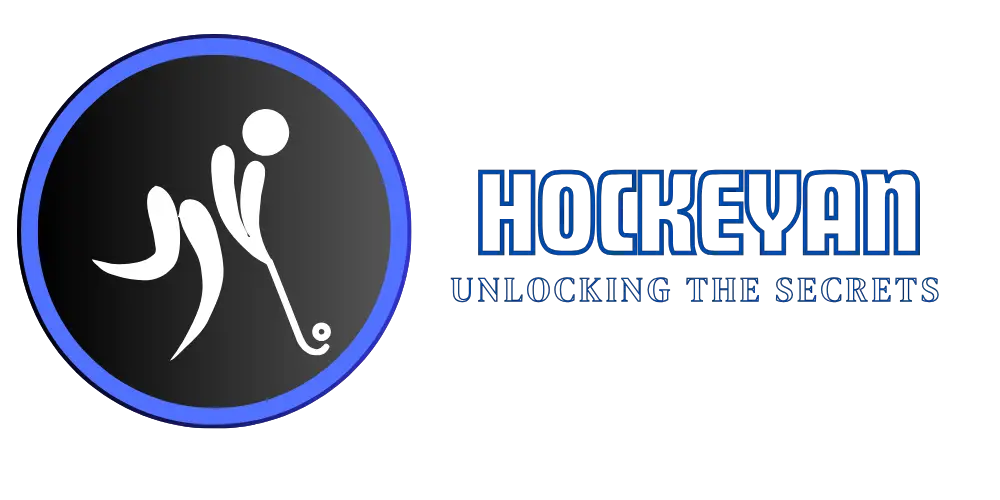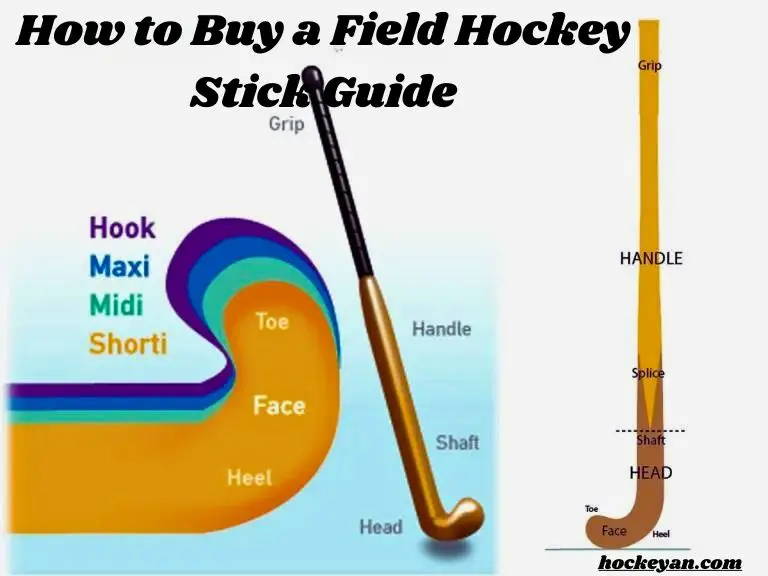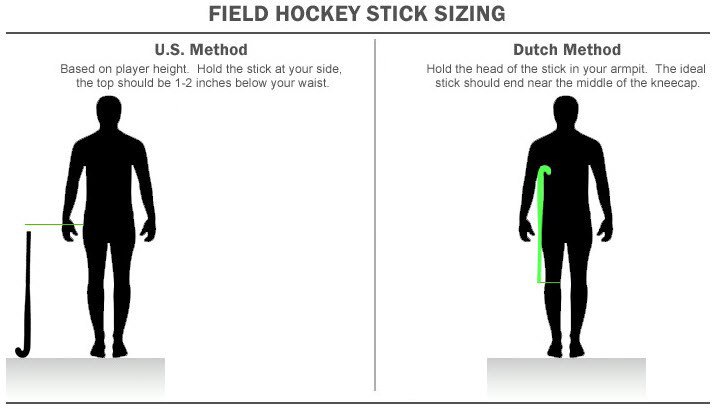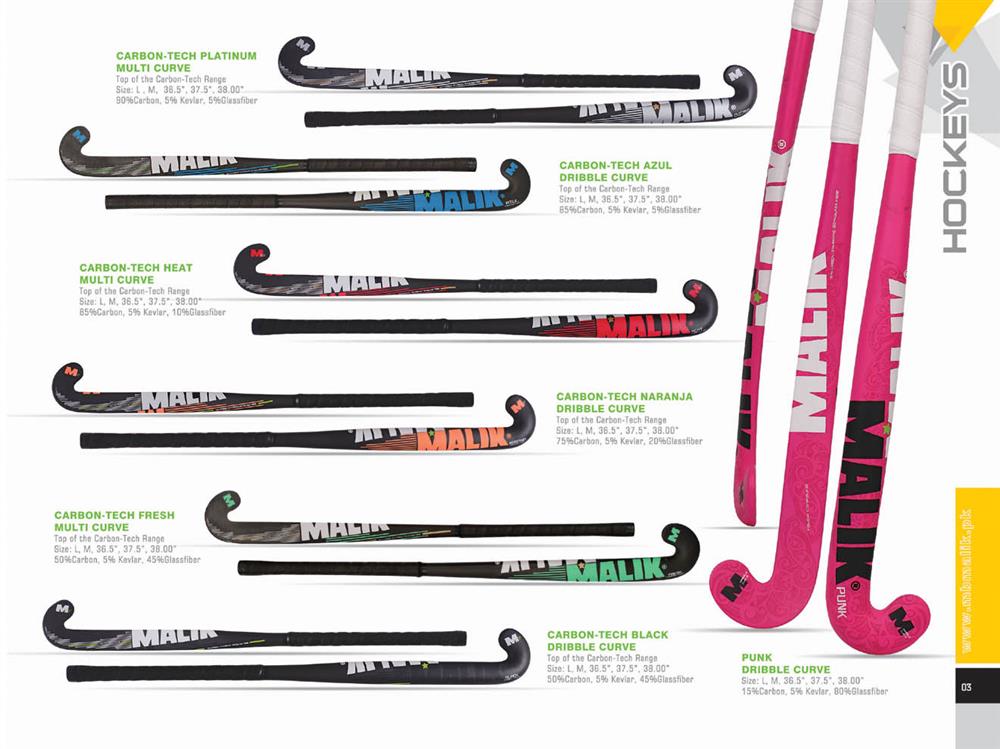How to Buy a Field Hockey Stick Guide? To buy a field hockey stick, consider the player’s position, skill level, and stick composition. Proper size and weight are crucial.
Selecting the right field hockey stick enhances performance and comfort. First, determine the player’s position and skill level. Forwards benefit from lightweight sticks for speed and agility. Defenders need heavier sticks for powerful hits and tackling. Midfielders require a balanced stick for versatility.
Next, choose the correct stick length, which should reach the player’s hip bone. Stick materials vary, with carbon offering power, fibreglass providing flexibility, and wood giving control. Finally, consider the stick’s bow shape, which impacts ball control and flicking. By assessing these factors, players can find a stick that matches their needs and playing style.
Credit: www.ragecustom.com
Introduction To Field Hockey Equipment
Field hockey requires specific equipment for effective play. One key piece is the field hockey stick. Choosing the right stick can improve your game significantly. This guide will help you understand the importance of the right stick and its key components.
Importance Of The Right Stick
Choosing the right stick is crucial. It enhances your control, power, and skills. A well-suited stick can make a big difference in your performance. It can help you play better and safer. Make sure you pick a stick that matches your playing style and level.
Key Components Of A Field Hockey Stick
A field hockey stick has several important parts:
- Toe: The part that hits the ball. Different shapes suit different playing styles.
- Handle: Where you grip the stick. It should feel comfortable in your hand.
- Bow: The curve of the stick. It affects ball control and passing.
- Weight: Sticks come in different weights. Lighter sticks are easier to maneuver, while heavier sticks provide more power.
| Component | Description |
|---|---|
| Toe | Hits the ball. Different shapes for different styles. |
| Handle | Where you grip. Should be comfortable. |
| Bow | The stick’s curve. Affects control and passing. |
| Weight | Lighter for maneuverability, heavier for power. |
Credit: www.networldsports.co.uk
Identifying Your Playing Style
Choosing the right field hockey stick can be tricky. Understanding your playing style is crucial. This guide helps you identify your style and find the best stick.
Position-specific Recommendations
Field hockey has different positions. Each position has unique needs.
| Position | Stick Characteristics |
|---|---|
| Forward | Lightweight, shorter length, better for quick movements and shots. |
| Midfielder | Balanced weight, medium length, good for both offense and defense. |
| Defender | Heavier, longer length, provides better reach and power for tackles. |
| Goalkeeper | Specialized sticks with extra length and protective features. |
Playing Style And Stick Choice
Knowing your playing style helps in stick selection.
- Aggressive Player: Needs a stick with a low bow. Great for drag flicks and aerials.
- Defensive Player: Should choose a heavier stick. Offers stability and powerful hits.
- All-Round Player: Prefers a balanced stick. Works well in various situations.
Identify your style to play your best game.
Material Matters In Stick Selection
Choosing the right field hockey stick depends on its material. The material affects the stick’s performance, durability, and feel. Understanding the differences can help you make the best choice.
Wood Vs. Composite
Field hockey sticks come in two main types: wood and composite. Wooden sticks are traditional and offer a classic feel. They provide better control and are softer on the hands. Composite sticks, made from materials like carbon, fiberglass, and aramid, are modern and durable. They offer more power and speed.
| Wood Sticks | Composite Sticks |
|---|---|
| Classic feel | Modern performance |
| Better control | More power |
| Softer on hands | Durable |
Advantages Of Carbon And Fiberglass
Carbon and fiberglass are common in composite sticks. Each offers unique benefits. Carbon increases the stick’s stiffness. This gives more power and precision. Fiberglass adds flexibility and durability. It makes the stick more forgiving and reduces vibrations.
- Carbon: Adds power and precision
- Fiberglass: Adds flexibility and durability
Choosing the right material can improve your game. Consider your playing style and needs.
Understanding Stick Length And Weight
Finding the right field hockey stick is crucial. The stick’s length and weight impact performance. Proper measurements ensure comfort and control. Let’s delve into these important factors.
How To Measure For The Perfect Fit
Stick length affects your reach and balance. To measure, stand straight with the stick beside you.
- The stick should reach your hip bone.
- For children, it should reach the top of the hip.
Use this table to find the recommended stick length based on height:
| Height | Stick Length (inches) |
|---|---|
| Under 4’0″ | 28″ – 30″ |
| 4’0″ – 4’4″ | 30″ – 32″ |
| 4’4″ – 4’7″ | 32″ – 34″ |
| 4’7″ – 5’0″ | 34″ – 35″ |
| 5’0″ – 5’4″ | 35″ – 36.5″ |
| Over 5’4″ | 36.5″ – 37.5″ |
Weight Considerations For Control And Power
Stick weight influences control and power. A lighter stick offers better control. A heavier stick provides more power.
- Lightweight sticks: 18-20 oz. Best for quick movements.
- Medium weight sticks: 21-23 oz. Balance of control and power.
- Heavyweight sticks: 24-26 oz. Great for powerful hits.
Choose the weight based on your playing style and strength. A balanced stick ensures optimal performance.
The Significance Of Toe Design
The toe design of a field hockey stick plays a crucial role in your game. It influences your control, maneuverability, and shot accuracy. Choosing the right toe design can enhance your overall performance.
Different Toe Shapes Explained
Field hockey sticks come with various toe shapes. Each shape offers distinct advantages.
- Shorti: Ideal for quick, skilled players. It allows swift movements and precise dribbling.
- Midi: Great for all-around players. It offers a balance of control and power.
- Maxi: Suitable for defensive players. It provides a larger surface area for trapping and hitting.
- Hook: Perfect for aggressive players. It offers maximum surface area for powerful hits.
Choosing The Right Toe For Your Play
Picking the correct toe shape depends on your playing style.
| Playing Style | Recommended Toe Shape |
|---|---|
| Quick and Skilled | Shorti |
| All-Round | Midi |
| Defensive | Maxi |
| Aggressive | Hook |
Consider your role in the team and pick accordingly.
- Analyze your playing style.
- Match it with the toe shape.
- Test the stick before buying.
Using the right toe shape can significantly boost your game. Make an informed choice for better performance.
Bow Shape And Its Impact
Choosing the right bow shape for your field hockey stick can greatly influence your game. The bow shape affects control, power, and maneuverability. Understanding the differences between bow shapes helps you find the best fit for your play style.
Standard Vs. Low Bow
A standard bow has a gradual curve. This curve is gentle and even. A standard bow is perfect for defensive players. It provides better control and stability.
On the other hand, a low bow has a pronounced curve. This curve is closer to the toe of the stick. Offensive players prefer low bows. They help with drag flicks and aerials.
| Bow Type | Characteristics | Best For |
|---|---|---|
| Standard Bow | Gradual curve, more control | Defensive play |
| Low Bow | Pronounced curve, better for skills | Offensive play |
Finding Your Ideal Bow Curve
Finding the ideal bow curve depends on your position and skills. Here are some tips to choose the right one:
- Defenders: Opt for a standard bow. It provides better control and passing accuracy.
- Midfielders: A mid-bow offers a balance of control and skill execution.
- Forwards: Choose a low bow. It enhances skills and attacking plays.
Remember, each player’s preference may vary. Testing different bows helps find the perfect match. Visit a local store to try different sticks. Feel the difference in curves and make an informed choice.
Grip And Handling
Choosing the right field hockey stick is crucial. The grip and handling impact your performance. Understanding these aspects helps you play better.
Types Of Grips
The grip on your stick affects control and comfort. Here are the main types of grips:
- Standard Grips: These are basic grips, often made of rubber.
- Cushion Grips: These grips have extra padding for comfort.
- Chamois Grips: Made from soft material, they absorb sweat well.
Each grip type has its pros and cons. Choose based on your comfort and play style.
Improving Stick Handling
Good stick handling makes a huge difference in your game. Here are some tips to improve:
- Practice Dribbling: Use cones to practice dribbling. This improves control.
- Use Both Hands: Practice using both hands equally. This increases versatility.
- Focus on Wrist Movement: Strong wrists help in better control and quick movements.
- Watch Professionals: Learn by watching professional players. Notice their hand movements.
Improving stick handling requires regular practice. Always focus on technique and consistency.
Here is a quick comparison of grip types:
| Grip Type | Material | Benefits |
|---|---|---|
| Standard Grips | Rubber | Basic control, durable |
| Cushion Grips | Padded | Extra comfort, reduces vibrations |
| Chamois Grips | Soft material | Absorbs sweat, better grip |
Choose the grip that suits your needs. This will enhance your game experience.
Where To Buy Your Field Hockey Stick
Finding the right place to buy your field hockey stick can be challenging. This section will help you navigate where to make your purchase. Whether you prefer online shopping or visiting a store, we’ve got you covered.
Trusted Retailers And Brands
Buying from trusted retailers ensures you get a quality product. Here are some well-known retailers and brands:
- Grays – Known for durability and performance.
- Adidas – Offers innovative design and technology.
- STX – Popular among professional players.
- TK – Combines tradition with modern techniques.
Online Vs. In-store Shopping
Choosing between online and in-store shopping depends on your needs.
| Online Shopping | In-Store Shopping |
|---|---|
|
|
Online shopping offers convenience. You can shop anytime from anywhere. Also, you get to compare prices easily.
In-store shopping allows you to feel the stick. You can check the weight and balance. Plus, you can get advice from experts.
Caring For Your Field Hockey Stick
Proper care of your field hockey stick ensures it performs well and lasts longer. Understanding how to maintain your stick will help you get the best out of your game. Below are some tips to keep your stick in top condition.
Maintenance Tips
Maintaining your field hockey stick is crucial for its longevity. Here are some easy tips to follow:
- Clean your stick after each use. Wipe it with a damp cloth.
- Store your stick in a dry place to prevent moisture damage.
- Use a stick bag to protect it from scratches and impacts.
- Check for cracks and damages regularly. Address them immediately.
- Avoid using your stick on rough surfaces, such as concrete.
When To Replace Your Stick
Knowing when to replace your field hockey stick is essential for maintaining performance. Here are signs it might be time for a new one:
- If you notice deep cracks or splits in the stick.
- If the stick has become significantly worn down.
- If the stick feels too light or heavy compared to when it was new.
- If the stick has lost its grip or control.
Regularly inspecting and maintaining your field hockey stick will ensure you play your best game.
Credit: www.fieldhockeysticksusa.com
Making The Final Decision
Choosing the right field hockey stick is crucial for your performance. It’s not just about the brand or price. You need to consider various factors to make the best choice. This section will guide you through testing before buying and consulting with experienced players.
Testing Before Buying
Testing a field hockey stick before buying is essential. It helps you get a feel of the stick’s weight, balance, and grip. Here are steps to follow:
- Check the Weight: Hold the stick to see if it’s too heavy or too light.
- Feel the Grip: Ensure the grip feels comfortable in your hands.
- Test the Balance: Swing the stick to check its balance and control.
- Try Different Models: Test various models to find the best fit.
Testing can help you find a stick that enhances your skills.
Consulting With Experienced Players
Experienced players have valuable insights about field hockey sticks. Consulting with them can guide you to make a better choice. Here’s how:
- Ask for Recommendations: They can suggest brands and models that work well.
- Seek Advice on Features: They know which features are most important.
- Get Feedback on Durability: They can tell you which sticks last longer.
- Understand Performance Benefits: They know which sticks improve game performance.
Engaging with experienced players can help you make an informed decision.
Frequently Asked Questions
How Do I Know What Field Hockey Stick To Buy?
Choose a field hockey stick based on your height, playing position, and skill level. Test different sticks for comfort and control.
How Do You Measure Yourself For A Field Hockey Stick?
Stand straight with your feet together. Measure from the ground to your hip bone. Choose a stick length matching this measurement.
How Do You Choose The Right Hockey Stick?
Choose a hockey stick by considering your height, position, and playing style. Ensure the stick’s flex and blade curve match your needs.
How Do I Know What Stick To Get For Hockey?
To choose a hockey stick, consider your height, position, and playing style. Visit a store for expert advice.
Conclusion
Choosing the right field hockey stick is crucial for your performance. Consider your playing style, position, and skill level. Remember to check the stick’s weight, length, and material. By following this guide, you’ll find the perfect stick to enhance your game.
Happy playing and good luck on the field!







